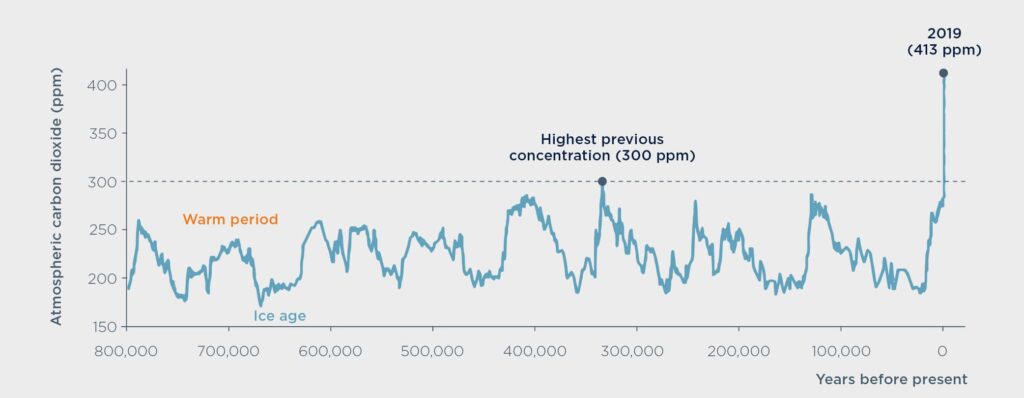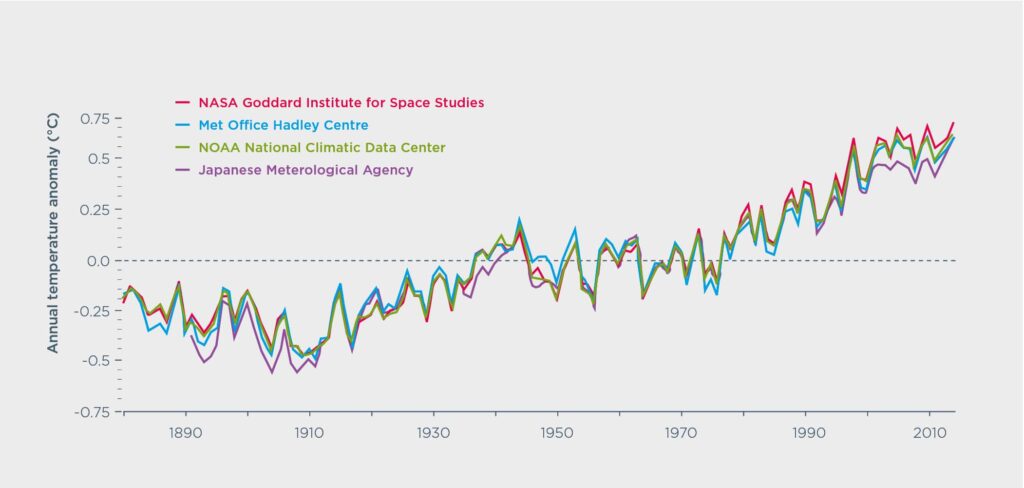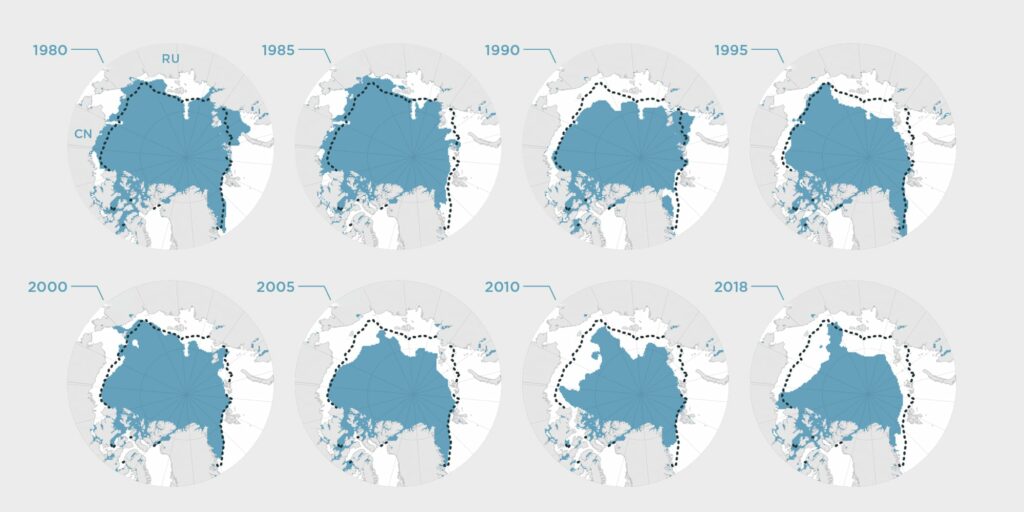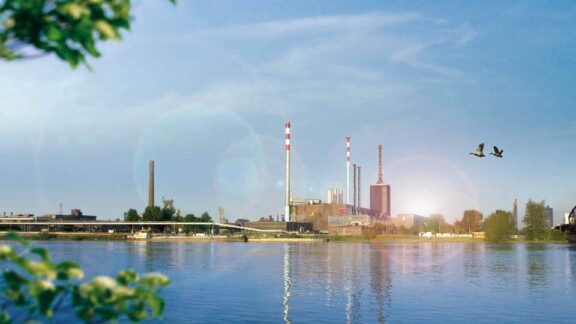This post is also available in: 简体中文 (Chinese (Simplified))
At Primetals Technologies, we care about the environment. We never stop to innovate for nature. We create new solutions that will ensure the long-term sustainability of the steel industry. Our technologies are designed to combat global warming and to make greener steel production a reality. We go where our customers are, and we make a point of taking our green-production solutions with us. When it comes to nature, we have only one planet, one future, and one mission.
Whenever you read about global warming or climate change, you’ll often come across two things: updated measurements of the CO2 content found in the earth’s atmosphere, and projected future scenarios, generated by climate models, that seem nothing short of apocalyptic. Often overlooked, however, are the simple foundations, the core of the science behind global warming.
At Metals Magazine, at the time of writing, we have spent almost half a year researching global warming. While this has certainly not made us experts, we have always aimed for objectivity and have spoken with university professors, ph.d physicists, journalists, teachers, and, of course, numerous colleagues from Primetals Technologies. We have also had discussions with members of the public who consider themselves critical thinkers. What we found is that quite a few of them—even some of the strongest advocates of stringent governmental climate action—were lacking the most basic understanding of the theory behind global warming.

This data, provided by the U.S. National Oceanic Atmospheric Administration (NOAA), shows CO2 levels in the atmosphere for the last 800,000 years. Since no direct measurements exist, the respective information was derived from ice cores—via the European Project for Ice Coring in Antarctica (EPICA). Atmospheric CO2 is measured in parts per million: 413 ppm equals 0.0413 percent.
Two hard questions
The Metals Magazine team asked two fundamental questions to start the conversations. First, “Are you convinced that climate change is a reality, and that it is entirely man-made,” to which the vast majority of interviewees would say yes. This was then followed by our second question: “What percentage of the earth’s atmosphere is currently made up of CO2?” Surprisingly, as essential as this piece of information might be to a well-founded stance on climate change, hardly anyone had any idea. Is it 12 percent? 15 maybe? Could it be more? And how much might CO2 levels have increased over time?
Our second question was, of course, a trick question. The proportion of CO2 in the atmosphere is usually measured in parts per million, rather than by percentage. Prior to the Industrial Revolution, 0.028 percent (equal to 280 ppm) of the air we breathe consisted of CO2, and today it is approximately 0.0413 percent (413 ppm, figure from early 2019). Clearly, the fact that we’re not even close to reaching one percent is no reason to doubt the reality of climate change. But the deficits in knowledge uncovered by our conversations does indicate that more education might be required to make informed decisions on how to tackle the potentially greatest problem faced by future generations.

The Goddard Institute for Space Studies (GISS), part of the U.S. National Space Agency (NASA), has accumulated temperature measurements from 6,300 metrological stations worldwide. GISS has used data from NASA itself, the U.S. National Oceanic Atmospheric Administration (NOAA), the Japanese Meteorological Agency, and the U.K.’s Met Office Hadley Centre. The graph depicts annual temperature anomalies, and while there are minor variations from year to year, the overall rise in average temperatures is clearly evident. NASA’s explanation for the leveling off between the 1940s and 1970s is that aerosols, generated by rapid economic growth after the Second World War, introduced cooling effects.
Too much of a good thing
So let’s get into our 101 of global warming. In a nutshell, it is the result of “too much of a good thing.” Without the earth’s atmosphere, our planet’s surface would be all but frozen. As sunlight enters the atmosphere, it is absorbed by oceans and continents, which warm up. Much of the heat is then radiated back toward space in the form of energy-rich infrared light. This is where “greenhouse gases” come into play. These gases—mainly water vapor, CO2, and methane—interact with the infrared light and keep it from leaving the atmosphere as it heads for space. As a consequence, the “good thing” happens: the atmosphere retains the heat. It’s just that too much of the warming effect has negative consequences—it is getting too warm.
As indicated, the amount of CO2 in the atmosphere has risen from 280 to 413 ppm since the Industrial Revolution. Carbon dating shows that this increase is indeed connected to the burning of fossil fuels—coal and oil. During the same period, average global temperatures have been reported to have risen by 1 degree Celsius. This is according to ground-based measurements; satellite-based measurements suggest a less pronounced increase in temperature, especially in the tropical troposphere (the troposphere being the lowest part of the atmosphere, where most weather-related activity takes place). The International Panel of Climate Change has acknowledged this discrepancy in its fifth assessment report by attributing a 95 percent confidence rating to the assumption of the 1 degree Celsius increase.

Data provided by the U.S. National Snow and Ice Data Center shows that arctic sea ice has declined since the 1980s. Arctic ice tends to build up in winter and melt in summer; the illustrations above reflect the ice’s state in the month of September of the respective year, with the dotted line indicating the statistical average. Sea ice is thought to affect the mean global sea level, which on average has risen by 3.3 millimeters per year since 1993. The rise in sea level has been a matter of contention: in late September of 2019, the journal “Nature” retracted a disputed study that suggested a sea level rise of 91 centimeters by the end of the century. The study had also warned that certain hundred-year floods would become yearly events.
Serious consequences
While 1 degree might not seem like much, it is believed that any further increase could have dire consequences. Climate models predict more frequent extreme weather events, extended droughts, encroaching deserts, increasing wildfires, far-reaching effects on wildlife, as well as changing rainfall and agricultural patterns. However, these climate models are highly complex and, to a non-scientist, nothing short of “black boxes.” What’s less complicated and more obvious is what happens when ice melts. In this context, 1 degree can make a big difference: disappearing sea ice, receding glaciers—and in turn a rise in sea levels, which is currently measured at 3.3 millimeters per year on average. Based on this trend, a reduction in habitable coastal areas is inevitable.
The melting of the ice has further ramifications. An icy surface is highly reflective (50–70 percent), while the earth’s oceans are highly absorbent (only 8 percent reflected, the rest absorbed) of the sunlight’s energy. As arctic ice melts it is replaced by ocean, further adding to the planet’s warming. Another complication is the future of the permafrost soil in northern latitudes. Vast stretches of permafrost contain great quantities of CO2 and methane. Once thawed, these gases would be released into the atmosphere and would further amplify the greenhouse effect. To avoid the thawing of the permafrost regions, scientist believe that global warming must be kept below the 2 degree Celsius mark.
The arguably largest and most unsettling consequence of global warming is mass migration. Once certain regions are no longer habitable, people—millions of them—would be forced to relocate. The question is, to where? These “climate refugees” could pose the largest ethical challenge mankind has ever seen. Would the world’s nations accept them with open arms, or regard them as a national security and military concern? Previous refugee crises suggest that migration of this proportion has the potential to cause great disunity, if not major disarray, even in highly developed countries.

We explore what’s next in the world of metals. Our solutions are designed to support the steel industry in its transition to a low-carbon future. We innovate so that steel producers have the technologies they need to protect nature..
Global climate action
So what now? Some of the solutions for tackling climate change have long been evident—mankind’s dependence on fossil fuels will have to cease. The trend of a global rise in energy consumption will have to be reversed. More powerful means of sourcing renewable energy will have to be developed and implemented on an enormous scale. New breakthrough technologies will have to be pioneered. The biggest issue, however, will be to achieve global consensus about the need to act. Symbolic actions will have to be replaced by a comprehensive, honest and smart, top-down agenda. Only if the world’s leaders can truly unite on global climate action will mankind be able to embark on a new and different journey—toward greener lifestyles and a world economy driven by sustainability. At Primetals Technologies, we are ready to make our contribution to a greener future, with our innovative solutions and our deep commitment to protecting our planet.


